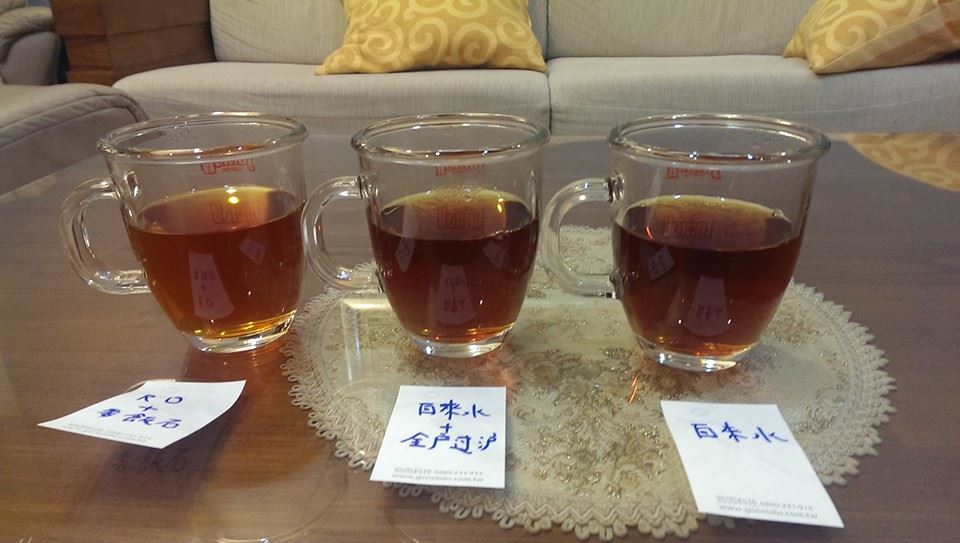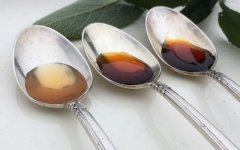The relationship between Water quality Index and Coffee Flavor-what is coffee water and why coffee water is used

Professional coffee knowledge exchange more coffee bean information please follow the coffee workshop (Wechat official account cafe_style)
Effect of Water quality on Coffee SCAA specifies the TDS value of water
Remember my previous article, water quality index and coffee flavor (1) mentioned the relationship between TDS and extraction flavor? I have always been impressed by Scott Rao's comments on The Professional Baristia's Handbook: "Coffee brewed with very high TDS water will taste very dull and cloudy. Very low TDS water can produce coffee with edge, unrefined flavors and often exaggerated brightness." P. 83, why does high TDS (mineral content) cause dull and what role do minerals in cloudy?, water play in the extraction of coffee? Is it irrelevant, or does it promote or suppress it? A more common saying is that low TDS water contains less minerals, so it should extract more substances than high TDS water. Purely from the point of view of solubility, the logic of this sentence is also correct. Minerals and coffee powder will interact with water, so the fewer minerals, the fewer "competitors" of coffee powder, so the ingredients of coffee will be extracted more. I didn't hesitate to pay for this explanation until I saw this website one day and it began to change some of my minds.
One day I read an online article called "The Impact of Customized Water on Coffee and Tea", which was discussing the effect of water composition on the extraction of coffee and tea. The author used three different kinds of water to make coffee and tea. I was curious about one group of photos, why the brown color of An is lighter, then C, and finally B, as shown in the following picture. I read the narrative. An is RO water, C is tap water in Ventura Counry, California, USA, and B is the protagonist of that article.
The author's description of An is: because the mineral quality of RO water is too low to react with tea, the color is the lightest and the astringency is the most among the three cups.
The description of B is: this tap water contains the most minerals and helps to interact with tea, brown is turbid, more serious after chilling, the color is the darkest of the three groups, and a thin film similar to an oil slick will be formed on the liquid surface.
My test.
So does the presence of minerals help "color reaction" or "extraction"? So I also soaked this similar test at home, using black tea from Yuchi Township. I used three kinds of water, namely:
1.RO water is passed through activated carbon and wheat rice stone filter TDS 6
two。 Tainan tap water is filtered by the whole household filtration system TDS 160
3. Tainan tap water TDS 220
I got a similar result. What is the reason for using the lowest TDS water to extract tea with the lightest brown color? Is it really a mineral?
So I found a report that "maybe it could partially" answer my question.
Scientific discoveries:
"The Science behind the perfect coffee", an online report published in June 2014, mentioned that Christopher Hendon, a postgraduate student in Centre for Sustainable Chemical Technologies at the University of Bath in the UK, and Maxwell Colonna-Dashwood, a local cafe owner, published a research article on Journal of Agricultural and Food Chemistry entitled "The Role of Dissolved Cations in Coffee Extraction."
The article mentioned that their discovery of "ingredients" (minerals) in water is the key to the proper extraction of coffee. It is further explained that although it is generally believed that hard water is not suitable for brewing coffee, it actually depends on the ingredients in the hard water, and if the water contains too much bicarbonate, it will not be conducive to extraction (Note: it has been pointed out in the literature that the existence of bicarbonate will prolong the extraction time of coffee), however, higher magnesium ions will increase the extraction of coffee and contribute to the flavor of coffee.
I'll probably talk about the design of the experiment. The author chose seven substances common in coffee to represent the flavor of coffee, which are 1. Lactic acid 2. Malic acid 3. Citric acid 4. Quinic acid 5. Chlorogenic acid 6. Caffeine 7. Eugenol. Lactic acid and malic acid stand for sour, citric acid for sweetness. According to the authors, quinic acid and chlorogenic acid represent the pungent and unpalatable flavors of coffee, while eugenol represents the aroma of barrels (common in coffee wine and whisky). On the other hand, the author calculates the binding distance between three cations of sodium, magnesium and calcium with the above seven substances, and the results are as follows.
They found that magnesium ions can be close to the above seven flavor substances at a close distance, and will produce a stronger binding energy to help with the extraction.
It is clear from the results in figure 3 that the binding ability of these cations to the seven coffee flavor substances and water is magnesium > calcium > sodium, so magnesium ions will increase the degree of extraction, so if the TDS of the aqueous solution is high, it may not necessarily reduce the coffee extraction. But this article gives the concept that moderate magnesium ions increase flavor (good and bad).
Choice of water:
In addition, the author also mentioned in an interview that there is no perfect water ingredient in the world, which is stable and suitable for the extraction of all baked beans. I also agree that, after all, the taste is very subjective and will vary from person to person, from culture to region or from country to country, and there is no absolute. My purpose in writing this article is not to deduce how good magnesium ions are, but to know exactly what effect the use of water will have. I admit that part of the reason is the bitterness caused by too much magnesium ion. I just don't like it, . For example, for some reasons, we do not like hard water (scale or soil smell), so do softening (removing calcium and magnesium), but softened water, no matter whether TDS is high (sodium ion exchange) or low (RO removal), seems to affect the formation of coffee flavor, and whether LSI after softening water will lead to corrosion and so on.
My expectation:
In addition to having these concepts, we should not only learn the coffee flavor from Europe and the United States (SCAA or SCAE), but also establish a flavor that belongs to Taiwan or the Chinese region. For example, the gold cup extraction rate that belongs to Taiwanese and the TDS that belongs to Taiwanese (for example, everyone says that the boiled coffee in Taipei Feicui Reservoir is very good, but its TDS does not meet the conditions of SCAA at all), all of these need a leader to conduct a census. I hope that cafes, social organizations, individuals or laboratories that have fame, resources and appeal in the coffee industry will not promote coffee evaluation and international competitions. We should gather together to establish our own consensus on coffee extraction, especially after so many Taiwanese contestants shine abroad, Taiwan's coffee has to develop its own characteristics before it can go its own way.
.
Important Notice :
前街咖啡 FrontStreet Coffee has moved to new addredd:
FrontStreet Coffee Address: 315,Donghua East Road,GuangZhou
Tel:020 38364473
- Prev

The effect of brewing water on the taste of coffee in capsule coffee machine
Professional coffee knowledge exchange more coffee bean information Please pay attention to the influence of water quality in coffee workshop (Wechat official account cafe_style) on coffee. SCAA stipulates that water has a TDs value of water, which is an indispensable element of a good cup of coffee. The purpose of this article is not to discuss which kind of water is most suitable for coffee, but to explore the effect of the type of water on the change of coffee taste. . water has hard water and
- Next

How to distinguish between light coffee and coffee water? how to make coffee water?
Professional coffee knowledge exchange more coffee bean information please pay attention to the coffee workshop (Wechat official account cafe_style) the effect of water quality on coffee SCAA water TDS value sometimes found that many people find it difficult to distinguish the oil and concentration of coffee some people think that the concentration of coffee should be enough, otherwise some people's coffee will water looks very light, but tastes slippery
Related
- Beginners will see the "Coffee pull flower" guide!
- What is the difference between ice blog purified milk and ordinary milk coffee?
- Why is the Philippines the largest producer of crops in Liberia?
- For coffee extraction, should the fine powder be retained?
- How does extracted espresso fill pressed powder? How much strength does it take to press the powder?
- How to make jasmine cold extract coffee? Is the jasmine + latte good?
- Will this little toy really make the coffee taste better? How does Lily Drip affect coffee extraction?
- Will the action of slapping the filter cup also affect coffee extraction?
- What's the difference between powder-to-water ratio and powder-to-liquid ratio?
- What is the Ethiopian local species? What does it have to do with Heirloom native species?

